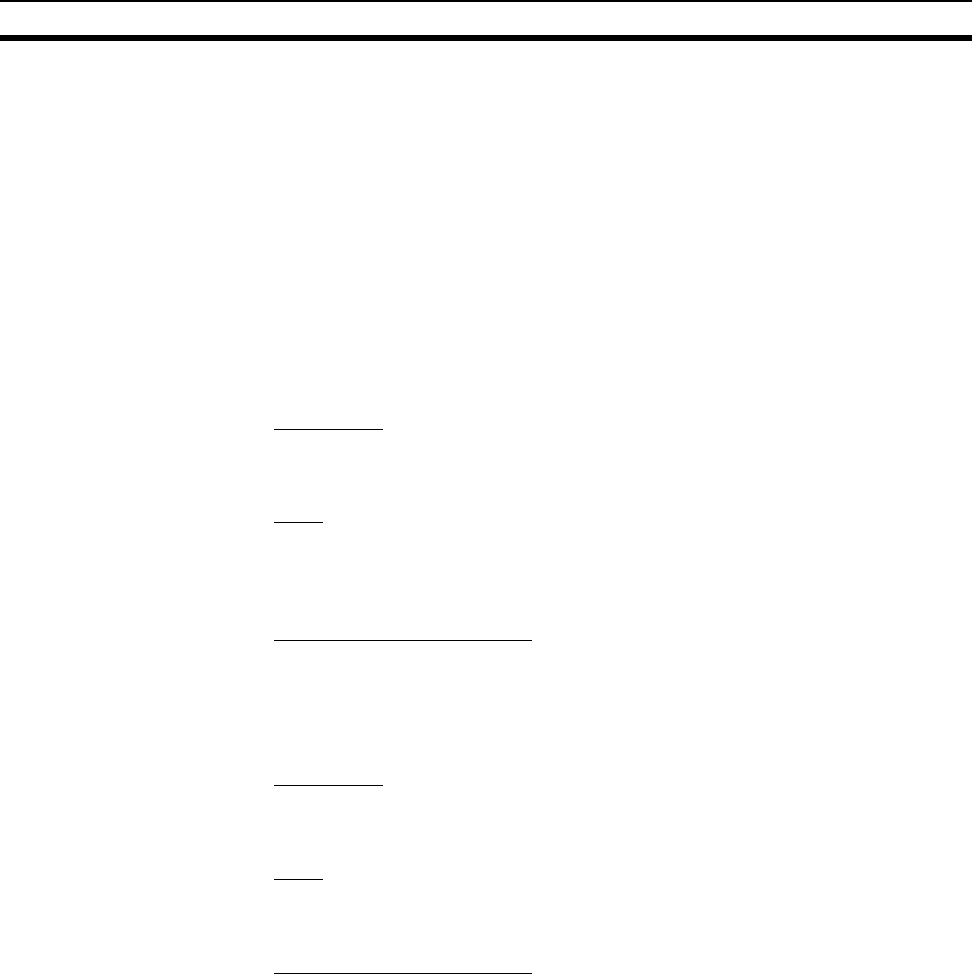
106
Socket Service Function Guide Section 6-4
6-3-5 Differences with Previous Models
Compared with the socket service functions of previous models (CS1W-
ETN01/11 and CJ1W-ETN11 Ethernet Units), the Number of Bytes Received
at the TCP Socket that stores the size of received data accumulated in the
reception buffer and a related Data Received Flag have been added. These
new features eliminate the need for ladder programs to monitor the timing for
completion of instructions and socket service processing, and thus reduce the
amount of labor required for program development.
6-4 Socket Service Function Guide
6-4-1 Manipulating Dedicated Control Bits
■ Description
The Ethernet Unit's socket services are used by setting parameters and
manipulating bits only.
■ Point
This method is used by setting the required parameters in the socket service
parameter area allocated in the CPU Bus Unit words in the DM Area, and then
turning ON the Socket Service Request Switches in memory.
■ Advantages/Disadvantages
A total of eight ports (UDP and TCP combined) can be used for socket ser-
vices.
6-4-2 Executing CMND(490)
■ Description
The socket services are used by sending service request commands to the
Ethernet Unit.
■ Point
A UDP or TCP socket service is requested by sending a FINS command to
the Ethernet Unit by executing CMND(490) from the CPU Unit.
■ Advantages/Disadvantages
• Knowledge of FINS commands is required.
• The previous user program can be used without changing because the
functions are equivalent to those of CVM1/CV-series Ethernet Units.
• A total of 16 sockets, comprising eight TCP ports and eight UDP ports,
can be used.


















